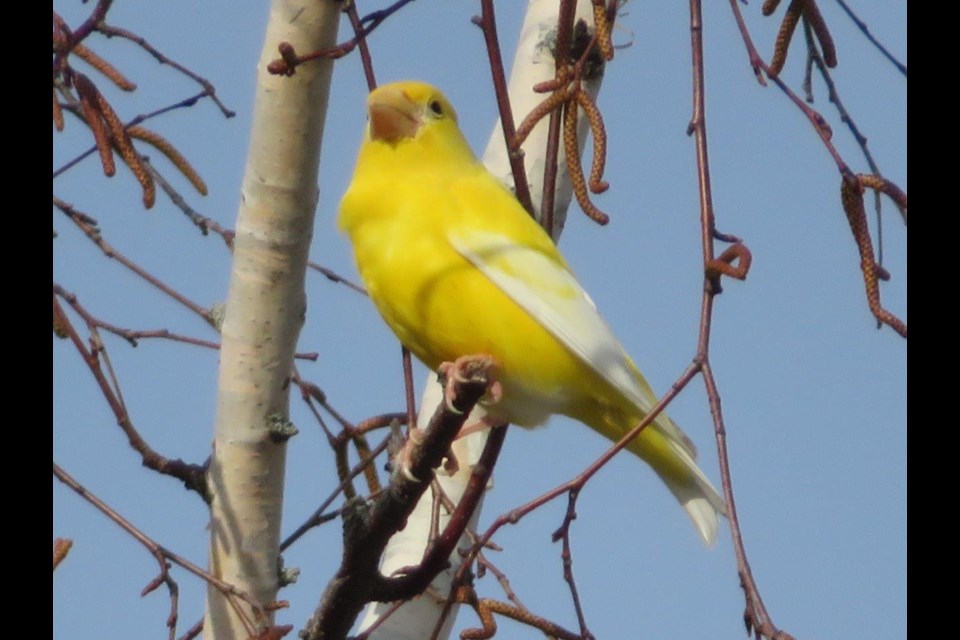Local birdwatchers are excited by what’s turned into a most unusual sighting in these parts.
A striking, beautifully coloured evening grosbeak has been showing up recently to enjoy a seed or two from the bird feeders at a Tiny Township home.
“This colour abnormality in evening grosbeaks is not unheard of but quite unusual,” says Ken MacDonald, a Midland-Penetanguishene Field Naturalists program director.
“None of us have ever seen it before. It is actually unusual for us to have even normally coloured evening grosbeaks in our area. Most years they tend to stay further north.”
Members of the local nature club originally thought the colour abnormality could be the result of leucism, an animal condition in which there is partial loss of pigmentation resulting in white, pale, or patchy coloration of the skin, hair, feathers, scales or cuticle.
But Ron Tozer, the Algonquin Park bird authority, had a look at the local photos and suggested xanthochromism, which is exhibited by an unusually high yellow pigmentation in an animal. It is often associated with the lack of the usual red pigmentation and its replacement with yellow.
According to MacDonald, a Cornell University survey of unusual-looking birds visiting feeders reported that 4% of such birds were described as xanthochromistic (compared with 76% albinistic).
“The opposite of xanthochromism, a deficiency in or complete absence of yellow pigment, is known as axanthism,” he said.
“It is a genetic defect or perhaps mutation. Experts might call this a form of leucism, xanthochromism or perhaps non-melanic schizochroism. Leucism is not the same as albinism,” said MacDonald who provided a link to partially explain the complicated scientific terms.
MacDonald said some people might confuse this particular bird with another species
“It's rather larger than a goldfinch which also has some black in its summer plumage,” he said. “I guess people might think they're looking at an escaped exotic cage bird, although it's larger and stockier than a canary and no other common cage birds fit the bill.
“It has all the field marks of a regular evening grosbeak except the colouration.”
MacDonald said the local club does occasionally run into other examples of leucism or colour abnormalities in other species.
As an example, he points to a Canada goose nicknamed Leucy, who’s been commonly seen at Rotary Champlain Wendat Park in Penetanguishene over the past several years (see accompanying photo). He also included a photo taken by club president Bob Codd that shows a leucistic American goldfinch visiting Port McNicoll.
Added MacDonald: “Wild birds in which xanthochromism has been recorded include yellow wagtail, wood warbler, Cape May warbler, rose-breasted grosbeak, evening grosbeak, red-bellied woodpecker, scarlet tanager, northern cardinal, great spotted woodpecker, common tailorbird, crimson-breasted shrike, kakariki and kea.”
As for the evening grosbeak, the Finch Research Project notes the species has experienced a 92% decline in numbers since 1970.
“The evening grosbeak (coccothraustes vespertinus) was cited as the steepest declining land-bird in the continental United States and Canada in the Partners in Flight 2016 Landbird Conservation Plan,” the project noted on its website.
“Causes for the decline are not fully understood, but may be a result of several factors including spruce budworm population cycles, forest alteration and loss, collision and disease mortalities, and climate change factors.”
